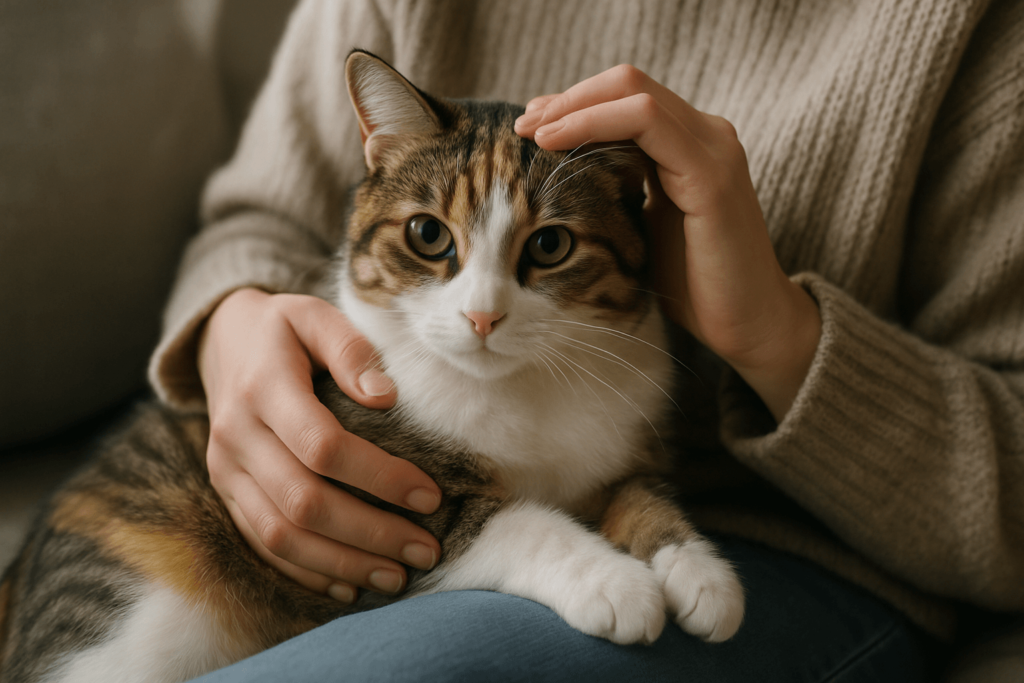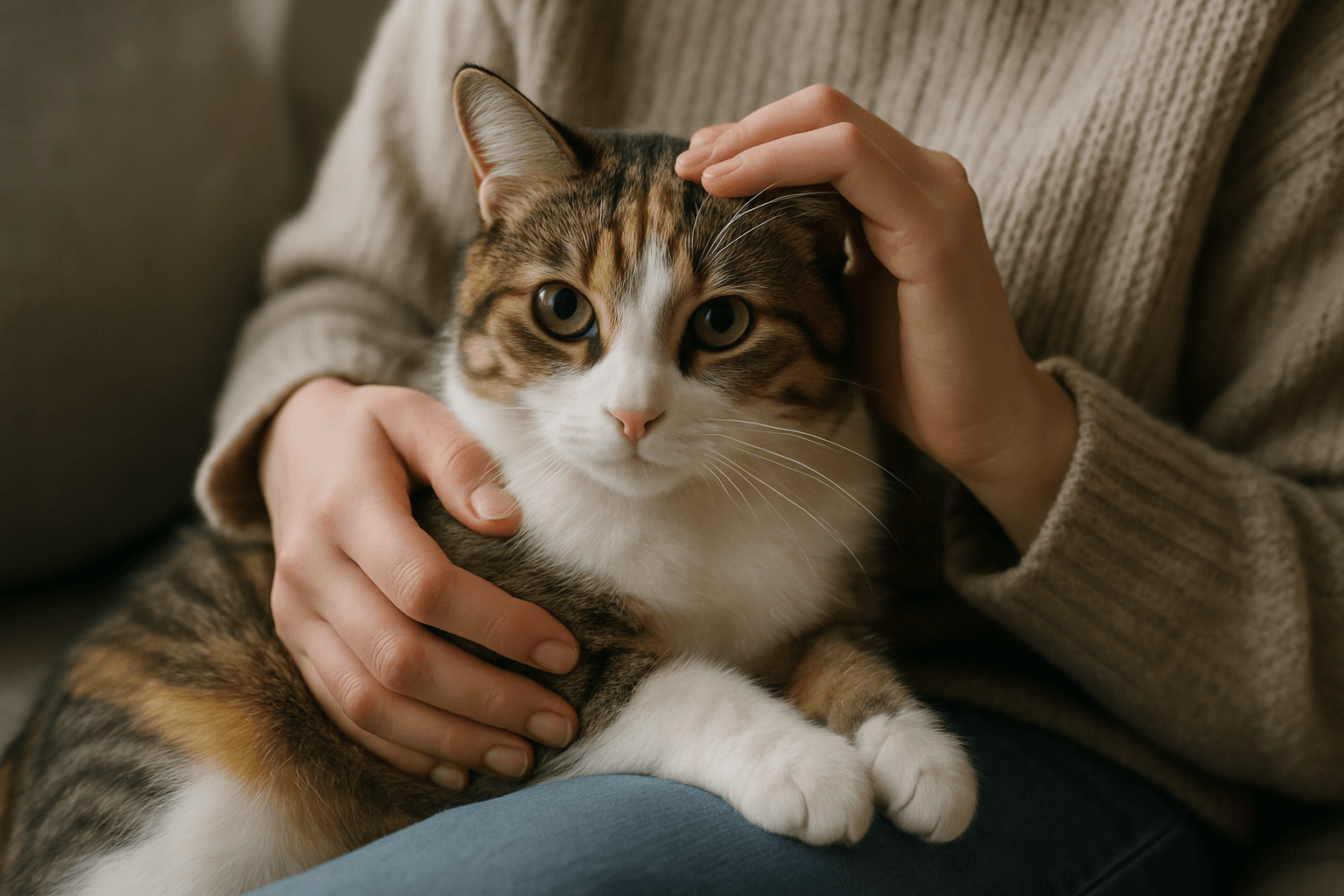How to Make a Cat Feel Safe: A Guide to Feline Comfort
Cats are naturally cautious creatures, and ensuring they feel safe is essential for their physical and emotional well-being. Whether you’re welcoming a new cat into your home, helping a rescued feline adjust, or simply looking to improve your current pet’s environment, understanding how to create a sense of security is key. Feeling safe allows cats to thrive, express their natural behaviors, and build trust with their human companions. In this blog post, we’ll explore practical tips and strategies to make your cat feel secure, from setting up a comforting space to recognizing signs of stress. Let’s dive in and learn how to provide the ultimate sanctuary for your feline friend.
Creating a Safe Physical Environment
The first step in making a cat feel safe is designing a physical space that meets their needs. Cats value security, predictability, and comfort in their surroundings. Here’s how you can create an environment where your cat feels protected and at ease.
Provide Hiding Spots:
Cats instinctively seek out small, enclosed spaces when they feel threatened. Offer cozy hideaways like cat caves, boxes, or covered beds.Elevate Their Space:
Cats feel safer when they can observe their surroundings from above. Install shelves, perches, or cat trees to give them vertical territory.Limit Noise Levels:
Loud or sudden noises can startle cats. Use rugs, curtains, or white noise machines to dampen sounds and create a calm atmosphere.Create a Designated Safe Zone:
Dedicate a quiet room or corner where your cat can retreat when they need solitude. Equip it with familiar items like blankets or toys.Avoid Sudden Changes:
Cats thrive on routine. Introduce new furniture, pets, or people gradually to avoid overwhelming them.
By tailoring your home to meet your cat’s need for safety, you can help them feel more relaxed and confident in their environment.

Building Trust Through Positive Interactions
Trust is the foundation of any strong bond between a cat and their owner. Building trust takes time, patience, and consistent positive interactions. Here’s how you can strengthen your relationship while making your cat feel secure.
Respect Their Boundaries:
Allow your cat to approach you on their terms. Avoid forcing physical contact if they seem hesitant or fearful.Use Calm Body Language:
Speak softly, move slowly, and avoid direct eye contact, which cats may interpret as threatening.Reward Good Behavior:
Use treats, praise, or playtime to reinforce behaviors that indicate comfort and trust.Engage in Play:
Interactive toys like feather wands or laser pointers provide mental stimulation and help build rapport.Be Patient During Transitions:
Moving homes, introducing new pets, or other changes can be stressful. Offer extra reassurance during these times.
By fostering trust through gentle interactions, you create a sense of safety that strengthens your connection with your cat.
Check this guide 👉Understanding Deaf Cat Behavior Problems: Best 7 Tips!
Check this guide 👉Cat Behavior After Being Lost: Best 7 Expert Tips!
Check this guide 👉Understanding Cat Behavior After a Vet Visit: Best 7 Tips!
| Signs Your Cat Feels Safe | Signs Your Cat Feels Stressed |
|---|---|
| Relaxed body posture | Hunched or tense body language |
| Regular grooming habits | Excessive licking or lack of grooming |
| Curiosity about surroundings | Hiding excessively or avoiding activity |
| Purring and kneading | Growling or hissing |
| Sleeping in open areas | Seeking isolated or hidden spots |
Using Scent to Enhance Security
Cats rely heavily on their sense of smell to navigate the world and feel secure. Leveraging scent can significantly boost your cat’s comfort levels in your home.
Introduce Familiar Scents:
Place items with your scent, such as worn clothing, near your cat’s sleeping area to provide reassurance.Use Synthetic Pheromones:
Products like Feliway mimic calming pheromones and can reduce anxiety in cats.Avoid Strong Cleaning Products:
Harsh chemical smells can overwhelm cats. Opt for pet-safe cleaners with mild scents instead.Maintain Consistent Smells:
Avoid changing laundry detergents or air fresheners frequently, as unfamiliar odors can unsettle cats.Incorporate Their Own Scent:
Leave bedding or toys unwashed for a while to retain your cat’s scent, which provides familiarity.
By paying attention to scent, you can create a soothing atmosphere that makes your cat feel truly at home.
Helping a New Cat Adjust to Their Environment
Bringing a new cat into your home requires special care to ensure they feel safe and comfortable during the transition. These steps will help ease the adjustment process.
Set Up a Quiet Room:
Start by confining your cat to a single room with essentials like food, water, and a litter box. This minimizes overwhelm.Keep Initial Interactions Brief:
Spend short periods of time with your cat daily, gradually increasing interaction as they become more comfortable.Introduce New Pets Slowly:
Separate existing pets from the new cat initially, allowing them to get used to each other’s scent before meeting face-to-face.Stick to a Routine:
Feed, play, and clean at the same times each day to establish predictability.Monitor Their Behavior:
Watch for signs of stress or illness and consult a vet if needed.
With patience and care, your new cat will soon adapt to their surroundings and begin to feel secure.
Common Mistakes That Can Make Cats Feel Unsafe
Certain actions, even if unintentional, can make cats feel insecure or stressed. Avoiding these mistakes ensures your efforts to make them feel safe are effective.
Forcing Interaction:
Pushing a cat to engage before they’re ready can damage trust. Give them space to initiate contact.Ignoring Signs of Stress:
Overlooking behavioral changes like aggression or withdrawal can worsen their anxiety. Address issues promptly.Changing Environments Frequently:
Moving furniture or redecorating too often disrupts their sense of stability. Make changes gradually.Punishing Bad Behavior:
Negative reinforcement can increase fear. Instead, focus on redirecting unwanted behaviors positively.Neglecting Health Needs:
Untreated medical conditions can cause discomfort and insecurity. Schedule regular vet check-ups.
Avoiding these pitfalls helps maintain a harmonious and secure environment for your cat.
Activities That Promote a Sense of Security
Engaging your cat in specific activities can enhance their feelings of safety and belonging. These activities also strengthen your bond.
Interactive Play Sessions:
Stimulate their hunting instincts with toys that mimic prey, like feathers or wands.Gentle Grooming:
Brushing your cat not only keeps them clean but also reinforces trust and closeness.Clicker Training:
Teaching simple commands using clicker training boosts confidence and provides mental stimulation.Exploration Time:
Allow supervised exploration of new spaces to satisfy their curiosity safely.Quiet Bonding Moments:
Sit quietly near your cat, reading or meditating, to show you’re a source of calm and safety.
These activities foster a deeper connection while reinforcing your cat’s sense of security.
The Role of Nutrition in Feline Comfort
A balanced diet plays a crucial role in supporting your cat’s physical health and emotional well-being. Proper nutrition can contribute to their overall sense of security.
High-Quality Food:
Choose nutrient-rich diets tailored to your cat’s age, size, and health needs to support vitality.Consistent Feeding Times:
Regular meal schedules provide structure and reduce uncertainty.Hydration Stations:
Ensure fresh water is always available to prevent dehydration, which can cause stress.Special Treats:
Use treats sparingly to reward good behavior and create positive associations.Monitor Eating Habits:
Changes in appetite can signal underlying issues. Consult a vet if your cat stops eating or overeats.
By prioritizing nutrition, you lay the groundwork for a healthy, happy, and secure cat.
Frequently Asked Questions About Making a Cat Feel Safe
Why does my cat hide all the time?
Hiding is a natural behavior for cats seeking safety. Provide hiding spots and give them time to adjust.
What should I do if my cat seems scared of me?
Respect their space, speak softly, and offer treats to build trust over time.
How long does it take for a cat to feel safe in a new home?
It can take anywhere from a few days to several weeks, depending on the cat’s personality and history.
Can loud noises really scare my cat?
Yes, cats have sensitive hearing. Minimize loud noises to keep them calm.
Are certain breeds more prone to feeling unsafe?
While individual temperament varies, shy or nervous breeds may require extra effort to feel secure.
Empowering Your Cat to Thrive in a Safe Environment
Making a cat feel safe is not just about providing shelter—it’s about creating a sanctuary where they can express themselves freely and confidently. From designing a secure physical space to building trust and leveraging scent, every step you take contributes to their overall happiness and well-being. By observing your cat’s unique needs and responding with care and understanding, you can transform your home into a haven they’ll cherish forever. Remember, a safe cat is a happy cat, and a happy cat enriches our lives in countless ways.
Canned Pumpkin for Cat Diarrhea: Best 7 Expert Tips! Natural remedy to firm stools, soothe upset bellies, and support gut health safely.
Can a Cat Give You Scabies? Best 7 Expert Tips! Discover the truth about feline mites, human skin risks, and how to protect yourself—without panic.
Cat Flea vs Human Flea: Best 7 Expert Tips! Discover the truth about bites, species, and how to eliminate infestations for good.
Weird Cat Behaviors: Best 7 Expert Tips! Discover why cats do strange things—and how to understand, not punish, their instincts for a happier home.





